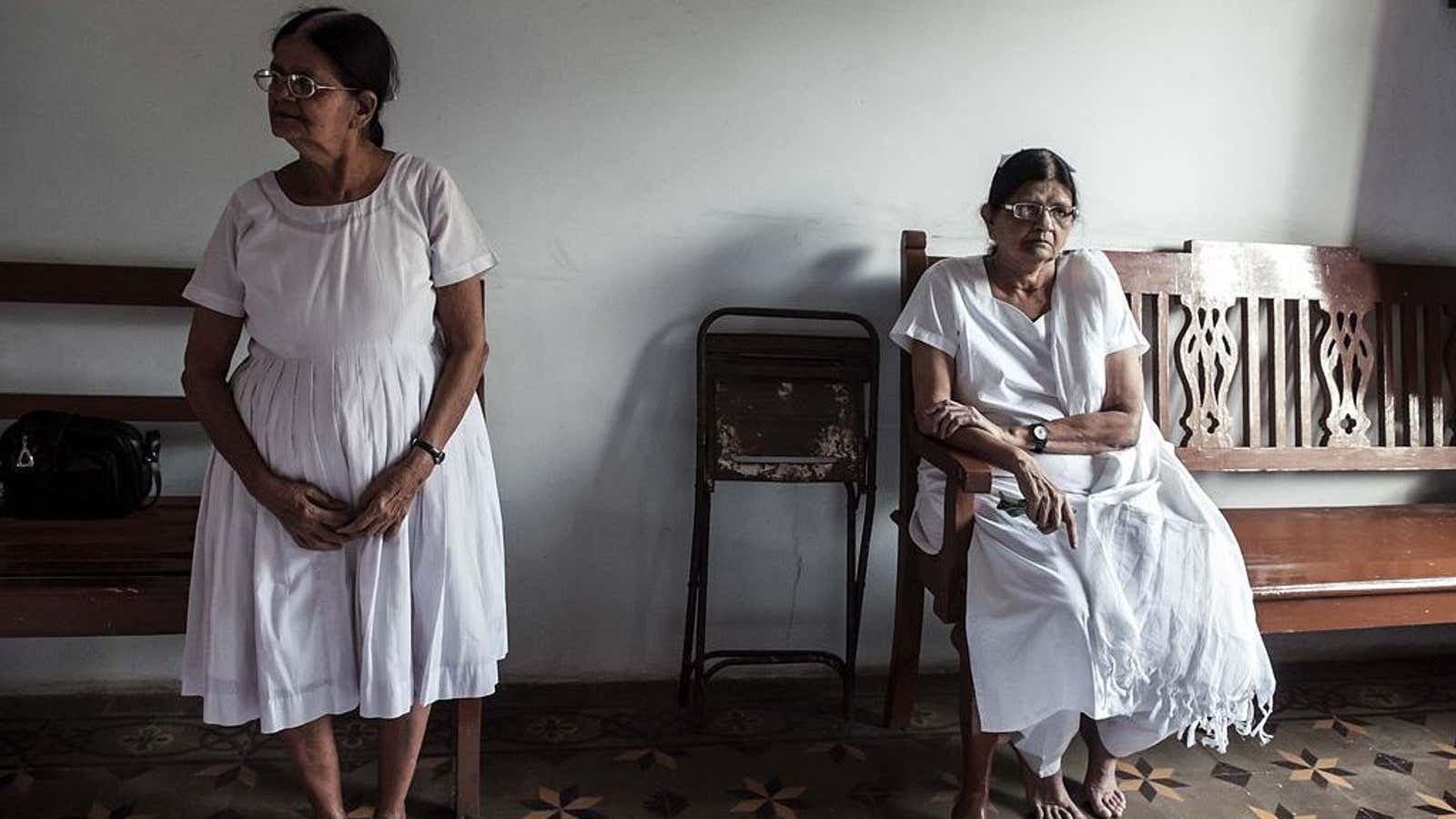The Bene Israel community has lived in India for the past 2,000 years, but unlike the Parsis, the country’s Jews are hard to spot. This has to do in part with the fact that Parsi food, customs, and endearing characters have made them a part of Mumbai’s charm. In contrast, the Bene Israelis (Hebrew for “children of Israel”) have incorporated cultural influences from India into their lifestyle, through food, dress or jewellery alone. This makes it difficult to distinguish them from the wider population.
But delve deeper and their traits become clearer. This is what photographer Bindi Sheth learned in 2010.
Through a series of fortunate events, Sheth met Indian-Jewish writer and art critic Esther David, who had grown up in Ahmedabad. David, whom Sheth calls Estherben, led Sheth into the small, anonymous world of the Bene Jewish community in Ahmedabad. “Estherben and I became good friends while documenting the synagogue,” Sheth said. “We would go through the pictures together after every shoot. We covered every aspect of the community, so we visited the Jewish families in restaurants where they had their birthday parties, at clubs for weddings, at their homes for rituals like baby showers, and also went to the cemetery to cover burials.”
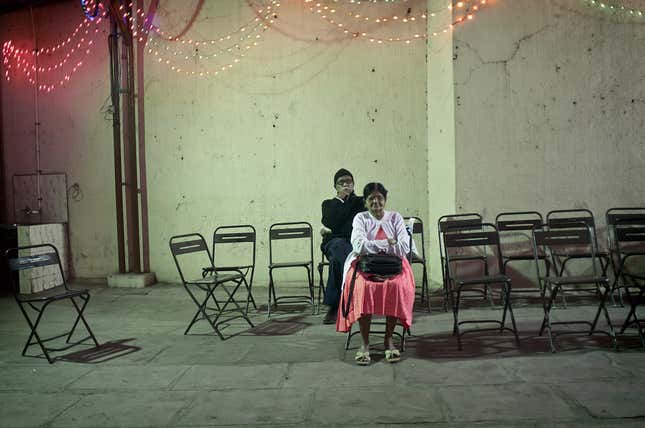
Through Estherben, Sheth had found the ideal, immersive project she had been looking for. She spent the next three years with David, photographing and learning more about the community, which was in a rapid decline mostly because of emigration to Israel. During this time, David and Sheth were funded by a grant from the Hadassah-Brandeis Institute, USA.
“They came to India from Israel after the fall of King Solomon’s second temple in 70 BC,” writes David in a curatorial note about Sheth’s work, currently on display at the Indira Gandhi National Centre for The Arts in Delhi as part of an exhibition, titled Hodu and the Jews.
Co-curated by author and art collector Kenneth X Robbins, the exhibit lays out the social, cultural and political history of the Jewish population in India.

Hodu and the Jews charts out the journey of the community in India and their diverse contributions to the country.
“There have been very few instances of anti-Semitism in India,” said Robbins. “They consider India their motherland and Israel their fatherland. They reached India after a shipwreck near Alibaug, near Mumbai, and kept their Biblical names, adding names of their villages to surnames. Bene Israel Jews believe India is the only country in the world where they have never faced persecution. They have many Indian influences in their lifestyle, like food habits, dress, jewellery; mehendi ceremony during weddings, using coconut, clove supari, paan, myrtle leaves, bijora, damro and desi red roses during rituals.”
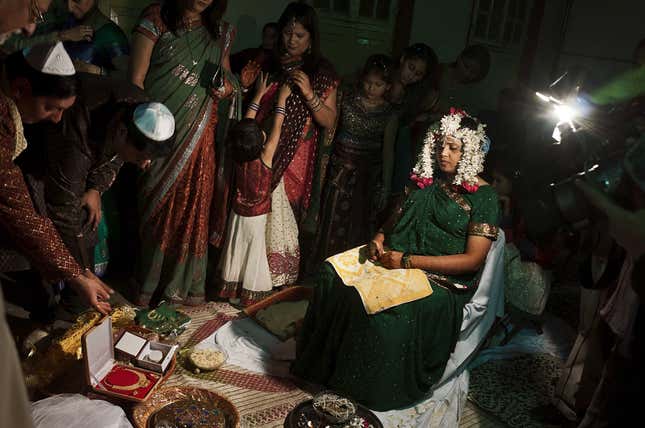
According to Sheth, it took a while to gain acceptance into the small Bene Israeli community. “Early on they were not very happy with an outsider ‘invading’ and documenting each and every event. Rituals and family milestones tend to be very personal and perhaps that was the reason they weren’t very encouraging. Knowing Marathi helped me immensely as it made them warm up to me. Being a regular at their events too helped them get to know me a little better. Before each one, David would brief me a little about what was going to happen, so I knew what to expect. Many times I would come back with photographs and while looking through them, David would discover little rituals or traditions that even she had missed all those years. When you’re a regular part of a community, you tend to not notice the little details.”
Between 2010 and 2013, accompanied by David, Sheth made multiple trips to the Jewish neighbourhood in Ahmedabad. The Jewish synagogue is in the old part of the city which has remained unchanged for years. Tucked away in a corner, many tend to walk past it without noticing it. “Like most parts of the old city, it has a Muslim population and a Hindu population living close by,” said Sheth. “Some Jewish families have moved to the newer areas, but there are those who have stayed on close to their house of prayer, like Johnnybhai and his wife Julieben. They play an important role in the synagogue, from conducting prayers to organising the food.”
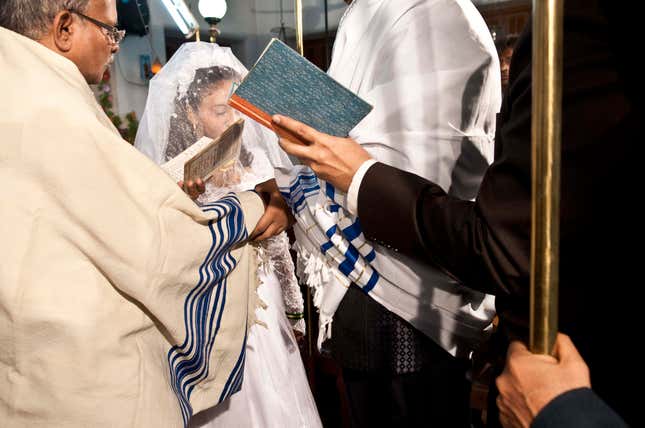
As a result, Sheth had front row access to many traditional events. When she didn’t, she still made the most of it: on Yom Kippur, Sheth visited the synagogue to find that she had been relegated to the women’s section of the house of prayer that has always been segregated by gender.
“During Yom Kippur [considered the holiest day of the year], when the synagogues are covered in white sheets as a symbol of purity, I was only allowed to shoot from the women’s gallery which was on the first floor,” said Sheth. Despite the handicap, the top angle photograph captures the quiet reverence of prayers and rituals.
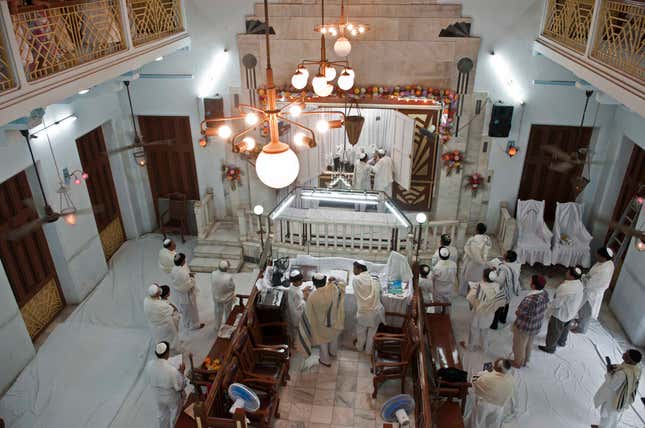
Apart from Yom Kippur and weddings, Sheth was also present on occasions like Hanukkah, celebrated for the triumph of the Jewish over religious persecution, the Passover, which marks the liberation of the Jewish people from slavery in Egypt, burials at the cemetery, fancy dress events, circumcisions and birthday parties. “I tried to adjust my travel dates accordingly and would be highly disappointed if I missed a single occasion,” said Sheth. “Eventually they realised I would be coming, so I also started getting wedding invites.”
One of the last pictures taken by Sheth is of the tools of circumcision, laid out neatly on a clean, white sheet of cotton wool.
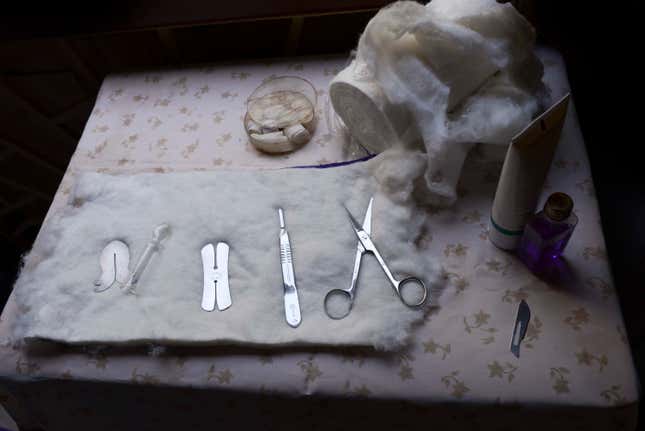
To explore the distinct elements of Jewish heritage and capture them on camera, Sheth turned to food, minutely documenting anything that seemed unusual. Many of her images are of sweets and savouries served on special occasions, like Yom Kippur, or the malida platter offered to prophet Elojah as a form of wish fulfilment. “A malida platter is prepared with dates, pomegranate, roses, fruit and poha (flattened rice) mixed with sugar and coconut,” explains David in her note.
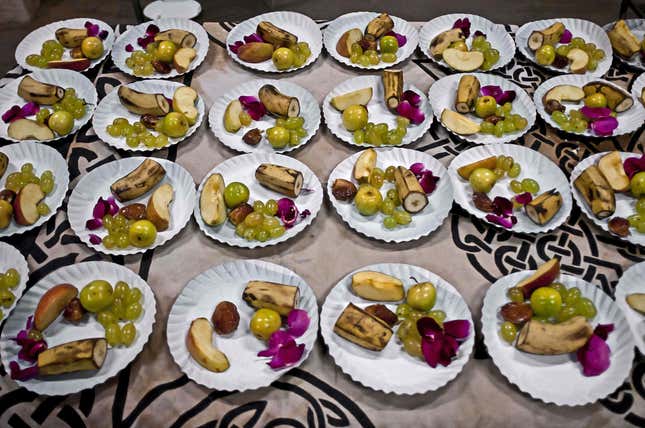
Another event celebrated by the Bene Israelis is Sukkot, commemorating the 40-year period during which the children of Israel were wandering in the desert, living in temporary shelters. A harvest festival, it is celebrated with booths erected and decorated with natural materials, like plants and palm leaves, with fruits and corn hanging from the ceilings.
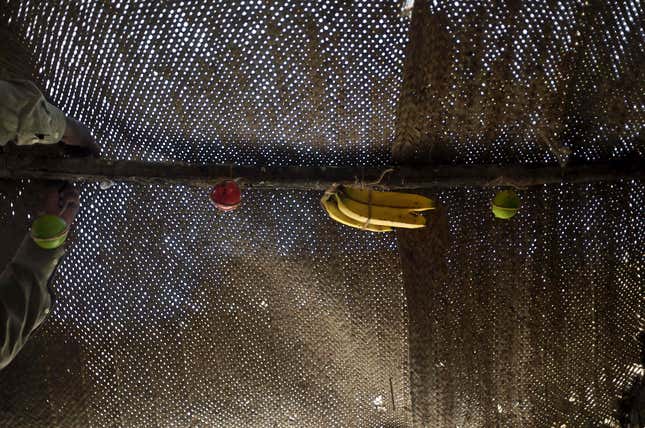
Covering the community’s history in detail, the exhibit is text heavy with each image from Robbins’s collection accompanied by explanations and timelines. “We realise it has quite a bit of text, but nobody really reads each and every word,” he said. “The show has been curated and written in a way so that if one person approaches a random exhibit and starts reading, there will be some context incorporated into the text.”
The show covers the presence of the Bene Israel community in cinema, business, art, politics and literature. It also talks about architecture through the models of homes and synagogues. One installation at the entrance to the gallery is inspired by, and modelled after, the Genizah at Kolkata’s Jewish cemetery. Created by artist Anchia Anzi, the genizah is a model of a storage area in a Jewish synagogue or cemetery for religious books.
According to the accompanying note, Kolkata’s cemetry has two genizahs. “One is a repository in which old and damaged books are collected through a small window in its domed and circular structure, while the other—following the Jewish custom—is sealed in the ground.”
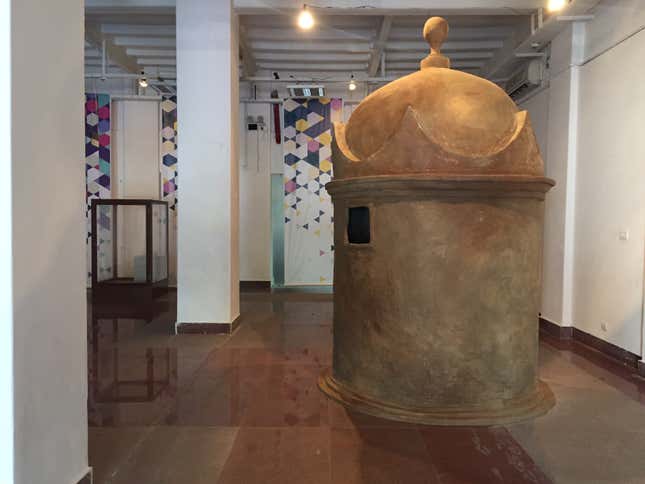
Hodu and the Jews is on display at the Indira Gandhi National Centre for the Arts, New Delhi, till Feb. 28.
This post first appeared on Scroll.in. We welcome your comments at ideas.india@qz.com.
